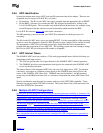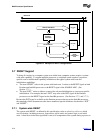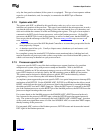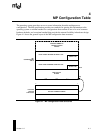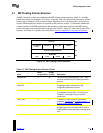
MultiProcessor Specification
3-16 Version 1.4
3.8 System Initial State
The system initial state is the state before the BIOS gives control to the operating system. It is
identical to the system initial state of a typical PC/AT system, with the additional MP components
in the following state:
1. All local APICs are disabled, except for the local APIC of the BSP if the system starts in
Virtual Wire Mode.
2. All pending I/O APIC interrupts are cleared and disabled.
3. If IMCR is present, it should be set to 0 or 1 depending on the interrupt mode chosen for
startup.
4. All APs are in Real Mode.
5. All APs are in HALT state or off the system bus.
The BIOS must disable interrupts to all processors and set the APICs to the system initial state
before giving control to the operating system. The operating system is responsible for initializing
all of the APICs.
3.9 Support for Fault-resilient Booting
OEMs may choose not to implement a fault-resilient booting capability in their systems. However,
if such a capability is provided, systems developers must observe the following guidelines:
• BSP determination may be performed by special hardware or by the BIOS, but it must be
totally transparent to the operating system.
• NMI and INTR must be connected to the BSP.
• FERR# and IGNNE# signals from the designated BSP must be used to support IRQ13.
• The A20M# signal from the designated BSP must be used to support the masking of physical
address bit 20 on the BSP (to support DOS compatibility).








